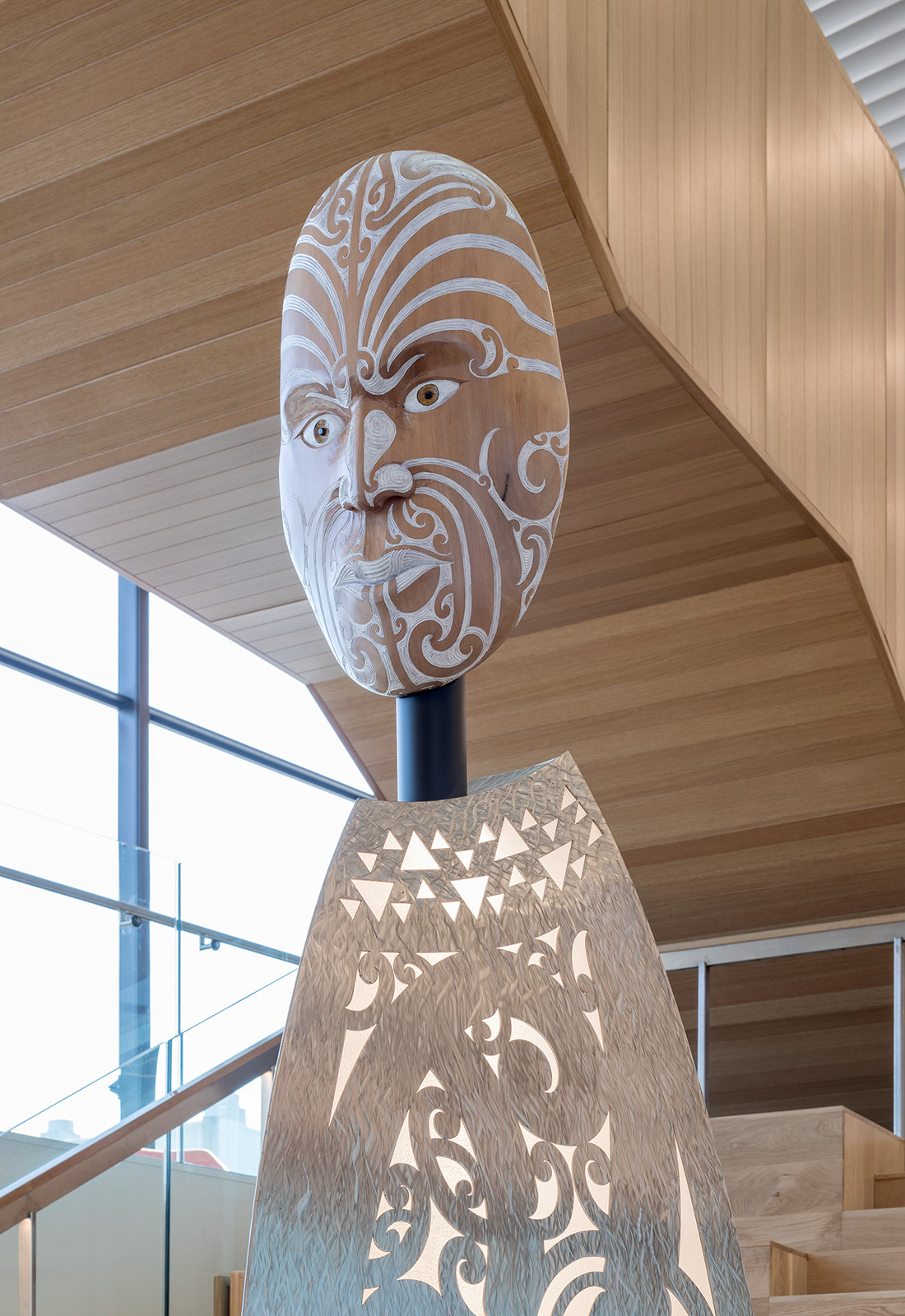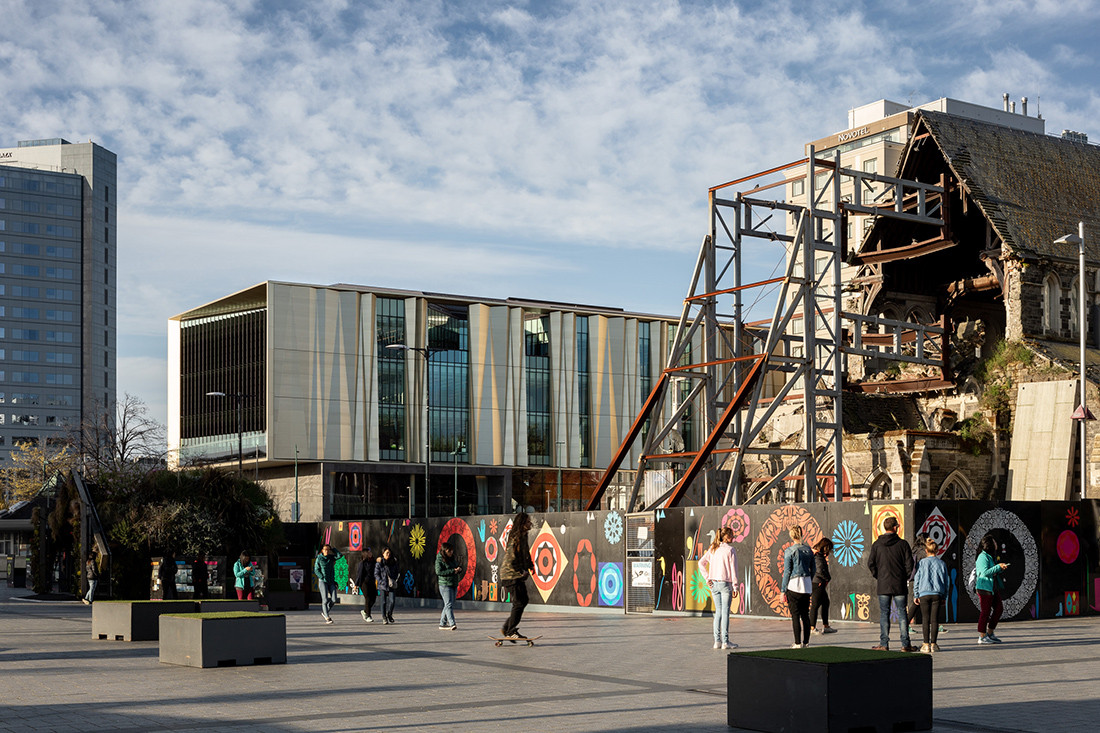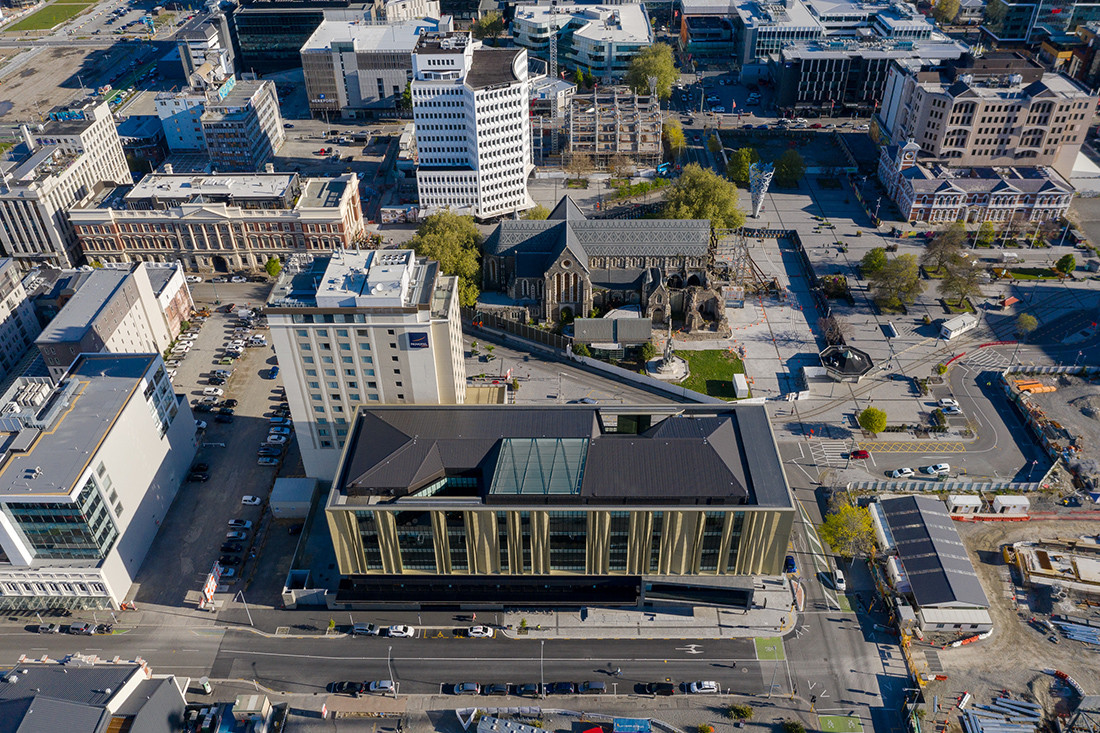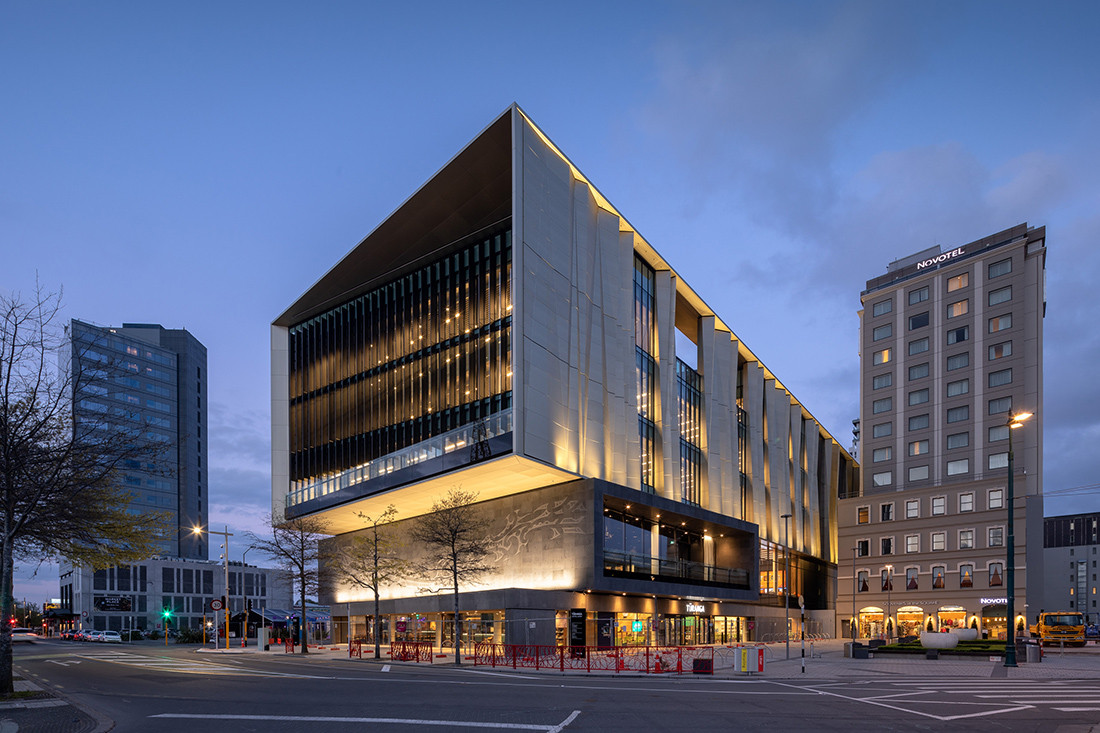For resurgent Christchurch, Tūranga is reinventing how a central library can ignite its cultural and social capital in a city still rebuilding.

January 21st, 2020
The Christchurch earthquakes of 2010 and 2011 destroyed most of the major civic, commercial, retail and council properties in the CBD with the associated dispersal of the local business community. Nine years on from one of the world’s most expensive natural disasters, the city has now rebuilt a number of strategic sites and precincts to create a more peopled, connected and sustainable urban centre.

Tūranga, the new central library, is a major piece of the rebuild puzzle. This carefully planned revitalisation project on Whitireia / Cathedral Square – the civic and cultural heart of Christchurch – is already attracting a greater number and variety of people back to the CBD.
With so many public and private facilities still missing from the city, the project brief was far broader than required of a typical library. Local groups and individuals wanted physical spaces to meet, hold events, create and innovate. Stakeholder engagement was robust and confirmed the library’s highly anticipated role in community activation and repair. Its purpose and programme would also include strong foundations for biculturalism; people- and place-based architecture. Tūranga, a place for all, would have local identities embedded – legible cultural and geographic histories and futures both in content and experience.

This library hybrid, therefore, has conventional library spaces, but also community spaces, civic spaces, social spaces, play spaces, maker spaces and public art. It is elegantly woven into the urban realm of Cathedral Square, repairing one edge of the historic Maltese cross of the colonial city plan and encouraging pedestrians to flow inside and through to blend with the city itself.
Another key civic signal is Tautoru, the ‘community arena’ – the main lecture and events space positioned on the corner overlooking the square. ‘The arena is a space for discussion, debate and sharing,’ says project director Carsten Auer from Architectus. ‘It represents the library’s civic nature and is lifted to level one for more visibility and a closer dialogue with the square. The children’s activity zone is also highly visible from the square, one of many gestures to invite and draw people inside.’

Tūranga actively caters for different styles and stages of learning, through social–collaborative settings, play spaces, computer hubs, a sound and recording studio, 3D printing and craft spaces – all in addition to its significant book collection. This free and equal access to resources means this library, built in the ‘post book’ era, has never been so popular.
To launch a platform such as Tūranga, the architecture had to be authentic to its place – reflective of its people and landscape, and their values, history and dreams for the future. The creative process began with a bicultural foundation: a collaboration between the library leadership team, the architects and local rūnanga, Ngāi Tūāhuriri, represented by the Matapopore Charitable Trust.
‘As a significant cultural site, we developed a distinct narrative – a kaupapa that could guide a building,’ says Matapopore consultant Keri Whaitiri. ‘Those early discussions helped inform the design concept, so that the cultural narrative could gradually and naturally transform into 3D object, structure and spaces. It’s a very collaborative process and relies on architects seeing us as design partners, which Architectus and Schmidt Hammer Lassen very much did. We would contribute to design workshops and review design iterations at key stages, so we could be confident the design development aligned with the narrative we first provided.’

An important part of this contribution was not only what content could be presented, but also how mātauranga or knowledge could be shared and conveyed within the building. ‘We looked at typical Māori forms of knowledge acquisition, such as creative practices, kanohi ki te kanohi [face-to-face interaction], wānanga [workshops] and tuakana-teina [intergenerational learning],’ says Keri. ‘The idea of handing down knowledge and whakapapa [ancestral connections] through art and performance is a culturally embedded process. With this dominance of the spoken word in Māori culture, Tūranga needed to also embody creative expression and spatial experiences that would offer a more subtle revealing of mātauranga. A catalyst that spurs us on to delve deeper.’
‘Starting from the entry into the building, the story of Tāwhaki’s journey up through the heavens to obtain knowledge informed how we configured the atrium, the staggered nature of the stairs, the colours, and the artwork,’ says Carsten. ‘The strength of the cultural narrative was fully realised in this ascension upward and out onto the roof terraces to views of significant landmarks for Ngāi Tūāhuriri. That whole spatial sequence grounds and uplifts you whether you are a local or a visitor.’

Tūranga is an elegant weaving and distillation of modern library practices, mana whenua cultural concepts, creative works, Christchurch European histories, and Western architectural approaches. It is as conceptual as it is practical, to stimulate the head, the heart and the hands of everyone who enters.
INDESIGN is on instagram
Follow @indesignlive
A searchable and comprehensive guide for specifying leading products and their suppliers
Keep up to date with the latest and greatest from our industry BFF's!

The Sub-Zero and Wolf Kitchen Design Contest is officially open. And the long-running competition offers Australian architects, designers and builders the chance to gain global recognition for the most technically resolved, performance-led kitchen projects.

In this candid interview, the culinary mastermind behind Singapore’s Nouri and Appetite talks about food as an act of human connection that transcends borders and accolades, the crucial role of technology in preserving its unifying power, and finding a kindred spirit in Gaggenau’s reverence for tradition and relentless pursuit of innovation.

How can design empower the individual in a workplace transforming from a place to an activity? Here, Design Director Joel Sampson reveals how prioritising human needs – including agency, privacy, pause and connection – and leveraging responsive spatial solutions like the Herman Miller Bay Work Pod is key to crafting engaging and radically inclusive hybrid environments.

Nicole Larkin has been awarded the 2025 Marten Bequest, providing two years and $50k to research coastal resilience and adaptation.

Designed by Plus Architecture, the Bone Marrow Cancer Trust’s Rānui Apartments have been officially opened by New Zealand Prime Minister Christopher Luxon.

Striking a harmonious chord amidst the urban rhythm of Adelaide’s Festival Plaza, Flinders University’s new campus integrates meticulously crafted soundscapes that soothe the buzz of modern pedagogy, settling into the building’s multifaceted context.
The internet never sleeps! Here's the stuff you might have missed

Designed by Plus Architecture, the Bone Marrow Cancer Trust’s Rānui Apartments have been officially opened by New Zealand Prime Minister Christopher Luxon.

The Australian Institute of Landscape Architects (AILA) Queensland Awards have been announced at a gala event held at inner-city Brisbane’s Blackbird on Thursday 12th June.

Taking cues from Harry Seidler’s materials and curving corridors as well as luxury hotels and hospitality design, GroupGSA has completed a new suite of offices in Sydney.